
All categories
Featured selections
Trade Assurance
Buyer Central
Help Center
Get the app
Become a supplier

(1486 products available)

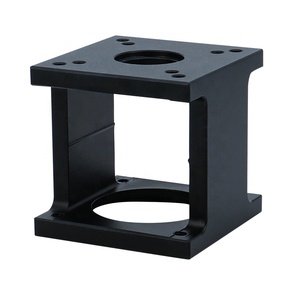

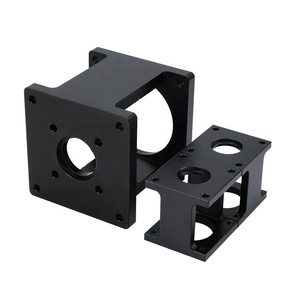

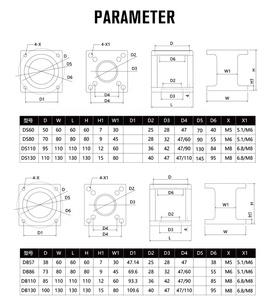
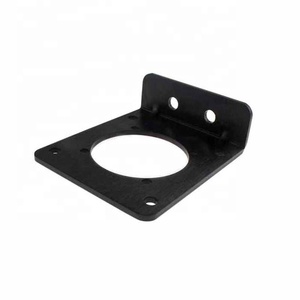







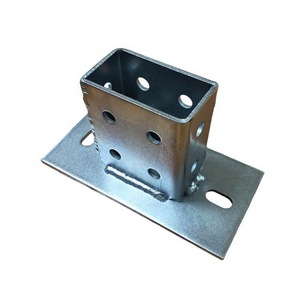
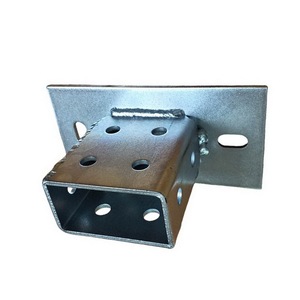



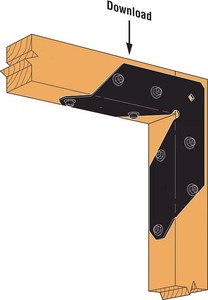


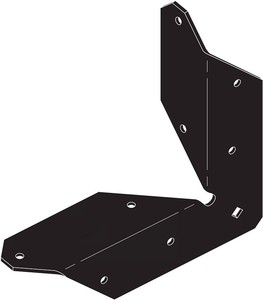











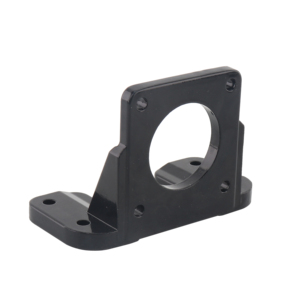


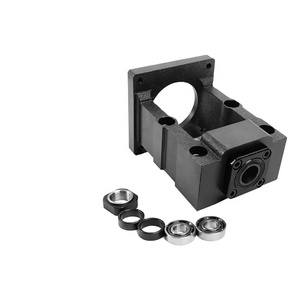
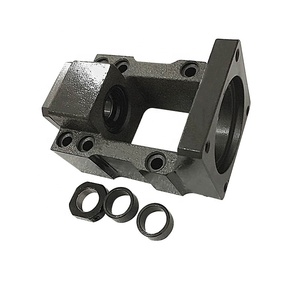



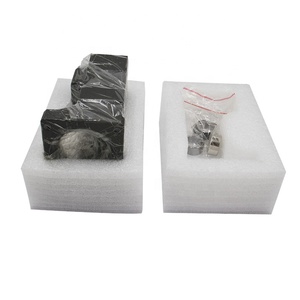
Servo motor brackets are essential components in any system that utilizes a servo motor. These apparatuses provide stable mounted points for the motor and also ensure that the applied actions are accurately and precisely transmitted to the driven system. Various types of servo motor brackets are designed for other applications, including horizontal systems, inverted systems, and configurations requiring unique orthogonal joints.
For business buyers, choosing the right servo motor bracket involves considering compatibility, load capacity, and application requirements. Here is a detailed overview of the most common types:
The vertical mount bracket is designed to be fixed in a vertical position, and thus, it is suitable for configurations that require the motor to be oriented vertically. These are widely employed in systems that need linear movement in a vertical direction, such as lifting and lowering systems. These brackets are manufactured from premium-grade materials to provide reliable stability and an extended service life.
Conversely, horizontal motor brackets are best suited for vertical mounting, where the motor should be oriented horizontally. These brackets are employed in systems requiring linear movement in a horizontal direction, such as conveyor belts or sliding mechanisms. Solid aluminum and, at times, steel are the most common materials applied in their production. Users will find these features critical for aligning the motor with the output components, minimizing wear and maintaining operational efficiency.
Specialized motor brackets for inverted mounting systems are designed to support motors mounted upside down. These brackets are primarily used in applications requiring the motor to be positioned from an inverted perspective while retaining correct operational alignment. For instance, during space restrictions, inverted brackets allow for flexibility in motor positioning without compromising functionality. The robust design of these supports also ensures that even in critical motion instances, stability and minimal vibration are guaranteed.
Angular or offset brackets are specifically designed to mount servo motors at an angle to the drive element, usually at perpendicular angles. Such brackets are important in systems where space limitations must be addressed or where specific transmission orientations are required. These are frequently used in complex drive mechanisms, such as robotic arms or multi-axis systems.
Several industries can benefit from using servo motor brackets and knowing their types. These components are widely used in robotic assembly lines, where accurate motor positioning is vital for precision tasks. In the automation industry, brackets are critical for controlling actuators in repetitive tasks, ensuring durability in high-cycle environments. The aerospace and automotive industries demand lightweight yet sturdy materials for motor mounts, making advanced composites an attractive option. In electronics manufacturing, small brackets hold components in tight spaces, balancing strength and minimal size. Even in healthcare, these components are found in medical equipment where reliable movement is essential. With such diverse applications, the market for servo motor brackets is both expansive and essential to multiple industries.
The commercial usefulness of a product directly correlates to the benefits it offers. Thus, servo motor brackets are very advantageous since they provide precise motor alignment, reduce vibration, and enhance the longevity of both the motor and connected components. In robotic applications, these brackets ensure that motors drive with high accuracy, resulting in improved operational efficiency. The materials used for the construction of the brackets are of premium quality and provide an extended service life, making them suitable for many industrial activities.
Manufacturing: In servo motor systems, bracket selection is vital for ensuring optimal performance in all dynamics. Therefore, based on operational variables such as load, motor size, and system orientation, the correct motor bracket defines the role of the system.
Robotics: Precision is critical in the robotics sector, especially when designing intricate movements. The types of servo motor brackets used here are carefully designed to enhance the performance of the robot's joints and limbs.
Automated Systems: Mounting plays an important role in automation. In these systems, motor brackets facilitate the drive of conveyors, pumps, and other devices by keeping motors in the proper alignment.
Aerospace: Due to the requirement for reliability and lightweight construction in the aerospace industry, premium materials in the construction of servo motor brackets employ advanced technology to enhance weight without sacrificing strength.
Health Sector: The healthcare space demands precision and dependability. Thus, the servo motor brackets offer the needed stability and performance in medical apparatuses, enhancing their functionality.
Precision Alignment: One of the major advantages of a servo motor bracket is precise alignment, as it protects the motor from excessive vibration and misalignment.
Enhanced Durability: A properly mounted motor experiences reduced wear and tear. Just like a stable one, the use of quality materials ensures extended life, thus saving on maintenance costs.
Flexibility: The variety of brackets allows users to mount motors in configurations that best relate to their needs. This flexibility will enable the user to avoid conventional designs, especially when spacing becomes a problem.
Support in Heavy Loads: Given their sturdy construction, brackets are meant to best withstand large loads and dynamic forces, ensuring that heavy-duty applications run effectively without any support failure.
Easy Installation: Most of the brackets are designed for easy motor installation and replacement with little or no downtime in business operations.
The following should be considered when choosing a servo motor bracket:
Material:Servo motor brackets are made of various materials, including steel, aluminum, and plastics. Steel brackets, for example, exhibit great strength and support heavy loads or high-stress environments, while aluminum is highly lightweight and corrosion-resistant and is great for applications where weight factors in but still has to maintain good strength. Plastics are lightweight and non-magnetic; hence, they are suitable for applications where electrical conductivity is a factor.
Shape and Size:The size of the servo motor bracket should be compatible with the motor and mount assembly area. It helps to reduce the tendency of the system by using the Correct bracket shape to avoid excessive bending moment. A large thermal mass can insulate heat better, whereas a compact mass can easily dissipate heat.
Type of Mounting:Servo motor brackets are always furnished with a particular mounting style, such as a threaded hole or stud. Such styling must correlate to the motor and drive system to enable easy assembly without tension. A motor and drive system can relate through the same mounting hardware.
Load Capacity:All motor brackets are designed with certain load capacities in mind. This means that the load should not be higher than the bracket can bear, as that can result in failure or excessive wear.
Adjustment Possibilities:Some servo motor brackets have adjustments or alignment features that can increase or decrease the motor's position to allow proper alignment with the drive system. This may also be important in applications where precision is key.
Looking beyond mere compatibility and functionality, the various specifications of the servo motor bracket directly impact the performance of the entire motor system, and therefore, buyers should consider factors such as:
Material: Brackets are made of steel, aluminum, and other alloys. While steel is strong and stiff for heavyweight applications, it can easily corrode if not protected. Conversely, aluminum is highly lightweight and fairly resistant to corrosion. Therefore, plastics come in handy for Electronic applications due to their non-conductivity characteristics.
Size and Shape: Depending on how big or small the servo motor is, one will need a proportional bracket in size. Such a proportional size creates a better thermal bond with low stress and better energy transfer. In addition, a well-sized bracket eliminates the tendency for the system to experience excessive vibrations.
Load Capacity:The bracket load capacity requires a consideration of both static and dynamic loads. The static load is the weight that is normally supported by the structure, while the dynamic load is the force generated during operation. The bracket intended use does give a general idea of the load conditions that may be expected.
Mounting Type:Different brackets mount the motor in different ways, such as using stud mounts or having threaded holes for screws. The mounting style must be in line with the motor and associated hardware to ensure easy installation.
Inspection:Regularly and thoroughly check the bracket for any signs of wear, tear, fatigue, or corrosion. Common spots include areas that have stress concentrations and welds.
Cleaning:Debris and dirt can easily get into various manufactured parts of a machine system, affecting the working state. The presence of dirt could even lead to overheating. One should always wipe and wash the bracket weekly to prevent such instances.
Tightening:Periodic running checks should be done to make sure that all fasteners are doing their job correctly – this means they should all be tight and secure. In the event that any bolts or screws end up becoming loose, that could cause the motor to vibrate, which can lead to wear and tear.
Lubrication:Though brackets do not have many moving parts, they may in some way come in contact with such parts that require lubrication, such as the motor shaft. Regular lubrication helps to reduce friction and keeps the motor cool.
Alignment Check:Brackets are manufactured in a way that they remain aligned with the motor and associated machinery elements. Any misalignment ensures that extra forces are created and thus checks the wear from motor vibrations.
A1: The buyer should select a motor bracket that has been proven to be compatible with the servo motor and drivetrain system that has been in use, and the Load the bracket should support should be proportional to the motor torque.
A2: Fatigue cracks, noticeable rust, severe vibrations, and a bent shape are clear tiring signs for a bracket. Like a worn tire, a worn bracket will not be able to perform effectively and must be replaced immediately.
A3: It guarantees that the motor's motions are effectively transferred to the load with reduced vibration while supporting the weight of the motor and attached elements.
A4: Steel, aluminum, and occasionally plastics, as well, commonly feature servo motor brackets because of their strength, resistance to corrosion, and comparatively low weight, respectively.
A5: For best performance, regularly inspect the bracket when the machine is in use to allow immediate servicing of any signs of wear or fatigue.